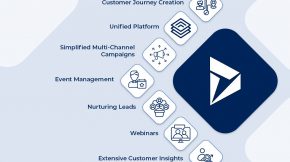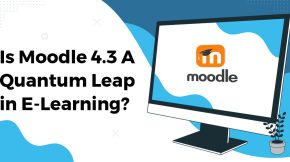5 Steps to Leverage AI in Manufacturing
The world’s economic engine relies on manufacturing to work effectively. For manufacturers to stay competitive they need a way to continue to produce cheaper goods at the highest quality possible without taking optimal use of human resources. It is a tall order and one reason, why artificial intelligence (AI) in manufacturing will be a foundation for achieving these goals.
The relationship between AI and manufacturing is still early. That is why it important for manufacturers to start integrating this technology today. By understanding the competition as well as having a plan, it is possible to successfully leverage AI for your enterprise.
AI in Manufacturing Trends
According to Zion Market Research, the AI in the manufacturing market will rise to $18.5 billion by the year 2025 from $1.1 Billion in 2018. That is an annual growth rate of 49.7%. over the next 5 years to reach this market size.
The question now becomes why the industry would adopt AI so quickly. A recent Microsoft report shared how AI helped manufacturing firms increase their performance by 11.5% compared to their peers.
What has the C-suite excited is the potential savings. McKinsey discovered how manufacturing companies who invest in AI could potentially double their cash flow over the next 5-7 years.
However, AI will not do this alone. Instead, it will work with other emerging technologies to create even better results.
For example, Consultancy.org discovered how embedded robots (robots that combine AI and IoT technology) have seen a 20% increase in productivity. The embedded robots supply ongoing maintenance, which ensures machines on the factory floor last longer and break less.
Brian Matthews, the Vice President of Platform Engineering at Autodesk, put it another way when he said, “it could achieve 50,000 days of engineering in one day.” These robots would not be possible a few years ago because they did not have the level of AI required to perform complex procedures.
5 Steps to Leverage AI in Manufacturing
1. Have a plan
Like most great technological advances, it is not enough to just want the trendy, innovative technology solution. The companies that benefit the most from AI have a plan.
The biggest challenge for manufacturing companies implementing AI technology in their facilities is that only 30% currently have a plan in place.
Therefore, start by researching what you want for your organization, so you can plan out your AI development in a rational way. This will help later when you need to integrate your AI technology with the rest of your software and hardware.
If you are not sure how to create a solid AI plan, then have your consulting firm help. Many Beyond Key clients come to us for AI services. Before we help them with the implementation, we work with them to create a plan that helps them realize the full potential of the applications they want to use.
2. Set a budget
Part of any good plan must include a budget. In this case, the budget is separated to address specific AI projects that relate to the plan itself. This step would happen at the same time as the plan.
However, the budget has been the end of many great AI projects. According to the Harvard Business Review (HBR), 40% of executives feel this is the biggest obstacle to using AI adoption.
Set up multiple budget options that would range from bare-bones to everything on your wish list. Most organizations usually choose a budget somewhere in between.
Additionally, one of the biggest AI expenses is finding a skilled team. If you want to test the waters with AI, you might want to consider outsourcing this task to a third-party provider. Often, they can do this with fewer expenses and
If you have questions about how to begin this process, contact an AI specialist today for a free 1-hour consultation.
3. Integrate with your current technologies
After the budget and planning, your organization needs to evaluate how AI will integrate with the rest of your technology stack. Most manufacturing companies have spent decades building out their technical capabilities without considering how to implement AI.
HBR also reported that 47% of executives feel the biggest obstacle they face is integrating AI with existing systems. To get the most out of your AI initiatives, make sure that your technical team evaluates the pros and cons of different tools and systems with your current setup.
4. Communicate with employees
Employees are nervous about whether AI will replace them. According to PwC, automation and AI could replace 38% of US jobs in the next 10-15 years. Your employees read the news and hear stories about how computers will replace their jobs.
If you want to use AI in your manufacturing enterprise, you need to be transparent. Let employees know the downside and benefits of AI.
For example, embedded technology keeps systems running longer. That way, workers have fewer disruptions in their schedules. There are fewer concerns about outages and more time to work. Explaining this to employees can help you get buy-in for these projects.
5. Improve data collection efforts
AI runs on data. The revolution in data collection over the past few years has laid the framework for better AI tools in the future. However, data is only as good as those who create the framework for this data.
For example, Gartner predicts that 85% of AI projects through 2022 will have “erroneous outcomes”. The reasons range from data bias to faulty algorithms to incorrect data input.
These mistakes will slow down AI adoption. To reduce the number of errors it is necessary to start improving data collection efforts now.
Before starting on AI projects, complete a review of all data collection procedures. Make sure they help your organization make the best decisions possible now. It often helps to make the data easy to understand for all employees. Therefore, you might want to consider having Power BI dashboards where you can visualize your data in one location.
Then start using that crystal-clear data to begin creating AI tools.
AI in Manufacturing Final Thoughts
The next decade will be an interesting explosion in artificial intelligence. Enterprises in the manufacturing industry need to take advantage of it for them before their competitors do.
If your organization wants to take the first steps, let us know how Beyond Key can help. Contact us today to connect with an AI expert who can help you determine the best strategy moving forward.




















